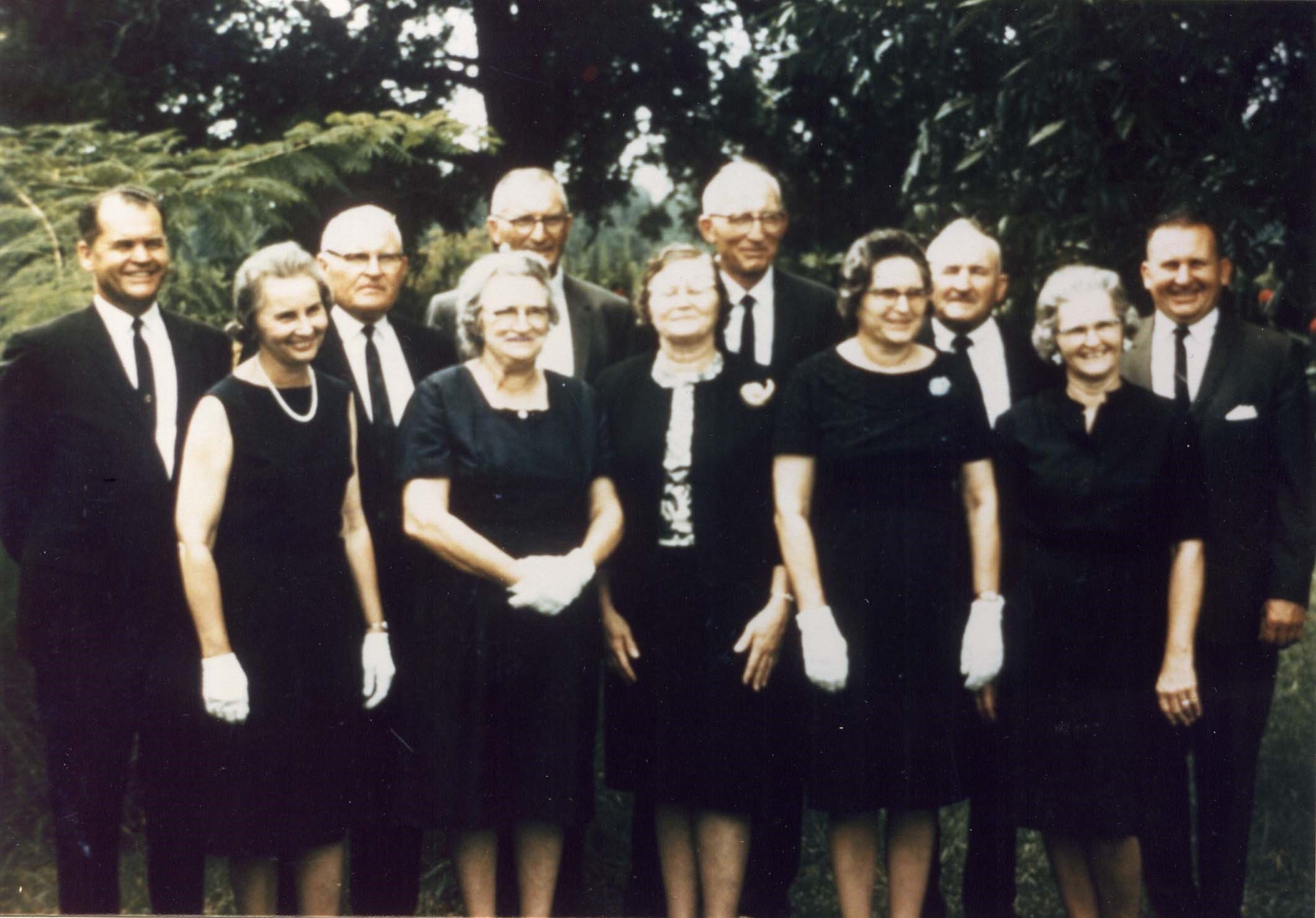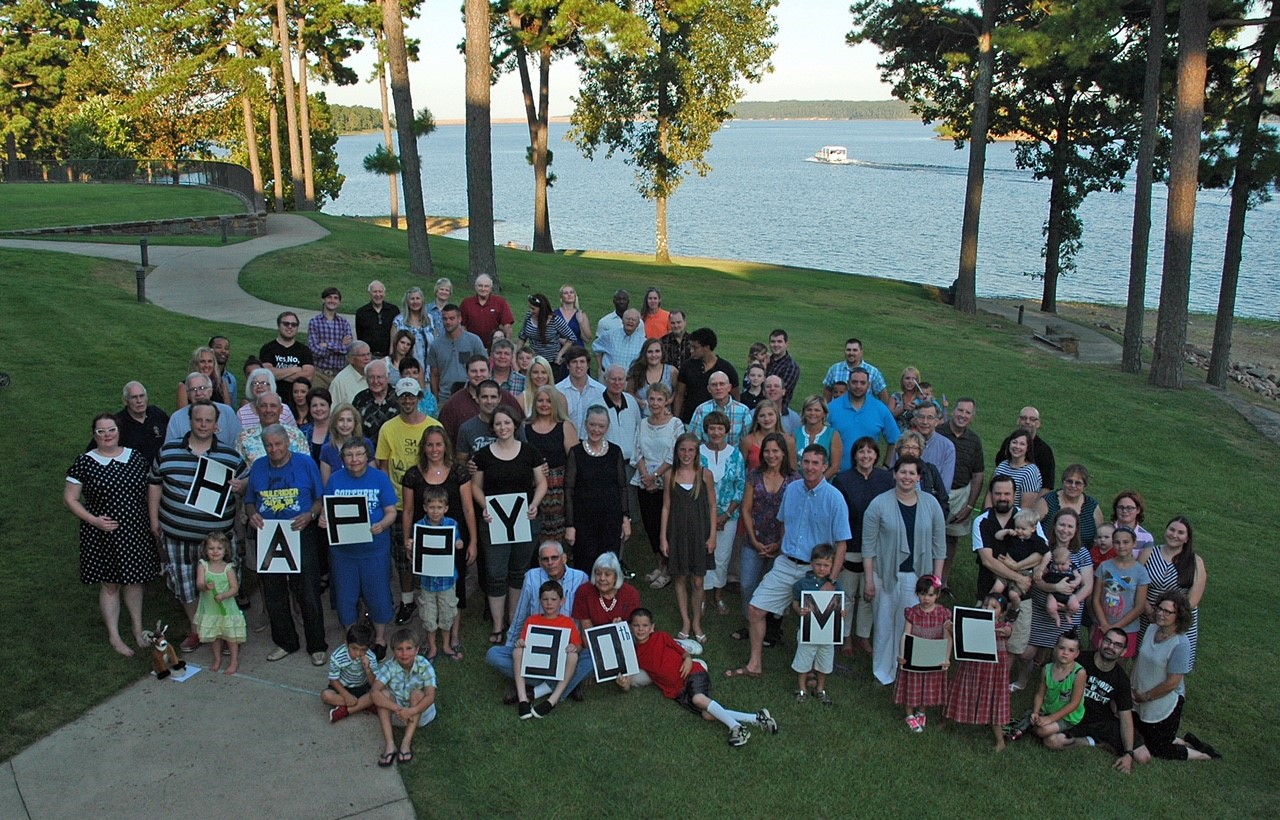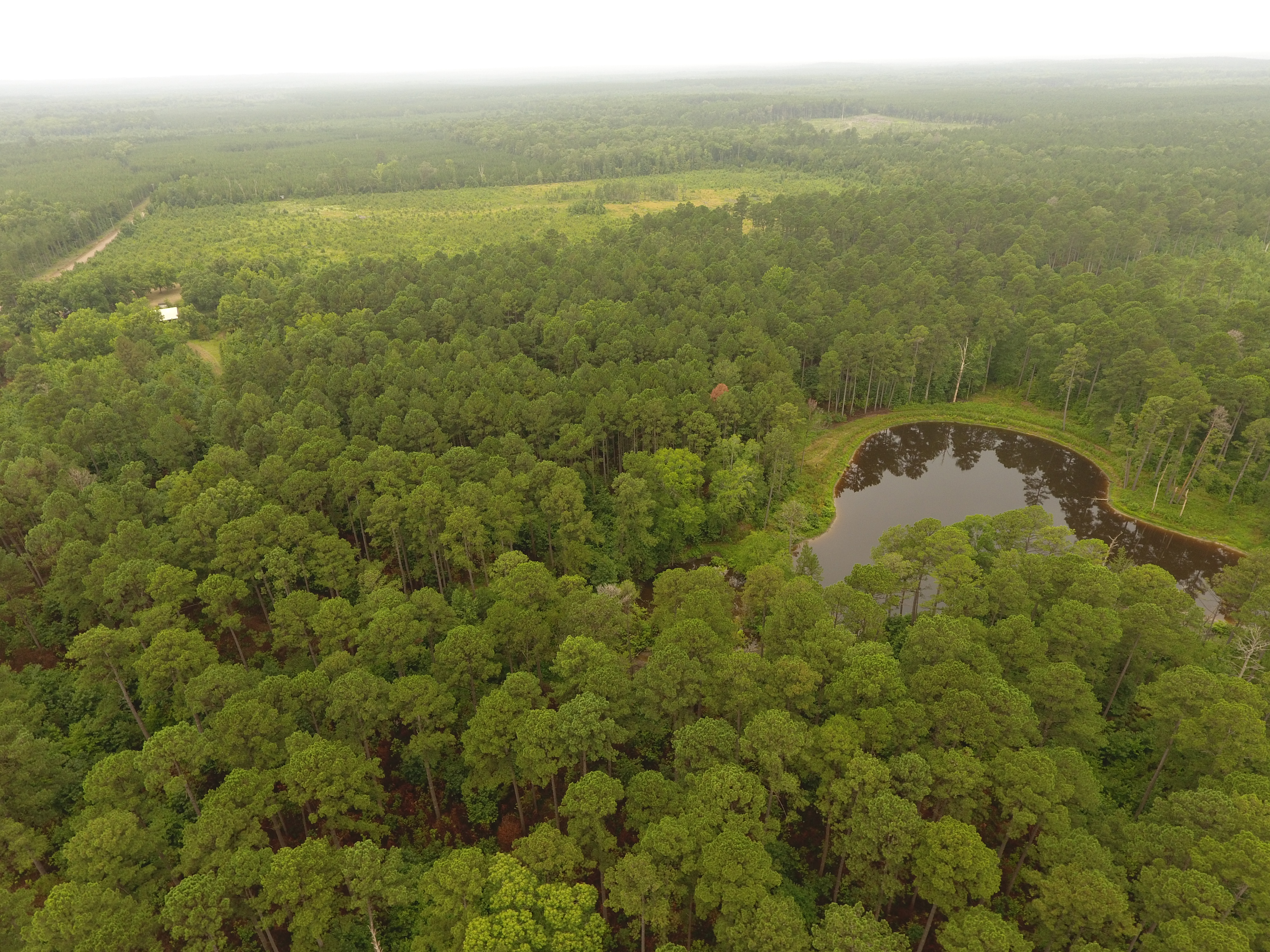Southern Nominee: McCollum Land Company of Arkansas
What makes them outstanding?
The McCollum Land Company, Inc. was established to oversee the management of the McCollum family tree farm in Columbia County, Arkansas. The company is comprised of 72 shareholders and currently has members that make up the 5th generation of the McCollum family with at least two more generations in place for future roles.
The tree farm is comprised of
760 acres of pine timberland. The original farm was obtained prior to the
American Civil War by John C. McCollum. The farm has undergone many changes
over the  years to coincide with the variable land uses such as row cropping,
livestock grazing, and growing vegetable crops. The farm has always had
portions that were timberland, but in the 1960ís, it was decided that the farm
would be used exclusively for timberland. Although the McCollum Land Company
Inc. was established to keep the land together as one entity, the remarkable
story here is that the land is actually what is keeping the family together.
years to coincide with the variable land uses such as row cropping,
livestock grazing, and growing vegetable crops. The farm has always had
portions that were timberland, but in the 1960ís, it was decided that the farm
would be used exclusively for timberland. Although the McCollum Land Company
Inc. was established to keep the land together as one entity, the remarkable
story here is that the land is actually what is keeping the family together.
For over 30 years, the company has held an annual shareholder meeting, which has enabled multiple generations and extended family members to get to know each other and give each member, regardless of their share of the company, a sense of belonging that is unique in todayís world.
Tree Farmer Story
The McCollum Land Company,
Inc. was established to oversee the management of the McCollum family tree farm
in Columbia County, Arkansas. The company is comprised of 72 shareholders and
currently has members that make up the 5th generation of the McCollum family
with at least 2  more generations in place for future roles. The tree farm is
comprised of 760 acres of pine timberland. The original farm was obtained prior
to the American Civil War by John C McCollum. The farm has undergone many
changes over the years to coincide with the variable land uses such as row
cropping, livestock grazing, and growing vegetable crops. The farm has always
had portions that were timbered, but in the 1960ís, it was decided that best
route for the farm would be exclusively for timberland. Although the McCollum
Land Company, Inc. was established to keep the land together as one entity, the
remarkable story here is that the land is actually what is keeping the family
together. The company has an annual gathering that is attended by approximately
100 people and they have been doing this for over 30 years now. These
gatherings allow the Board of Directors to address the shareholders with the
current state of the tree farm and to discuss management decisions. These
meetings have enabled multiple generations and extended family members to get
to know each other and give each member, regardless of there share of the
company a sense of belonging that is unique in todayís world. As the years have
gone by, the Board of Directors have struggled with how to go forward as a
family and a farm but is plowing new ground for a new generation of
shareholders. As a family farm, they have always been committed to sustainable
forestry and agriculture.
more generations in place for future roles. The tree farm is
comprised of 760 acres of pine timberland. The original farm was obtained prior
to the American Civil War by John C McCollum. The farm has undergone many
changes over the years to coincide with the variable land uses such as row
cropping, livestock grazing, and growing vegetable crops. The farm has always
had portions that were timbered, but in the 1960ís, it was decided that best
route for the farm would be exclusively for timberland. Although the McCollum
Land Company, Inc. was established to keep the land together as one entity, the
remarkable story here is that the land is actually what is keeping the family
together. The company has an annual gathering that is attended by approximately
100 people and they have been doing this for over 30 years now. These
gatherings allow the Board of Directors to address the shareholders with the
current state of the tree farm and to discuss management decisions. These
meetings have enabled multiple generations and extended family members to get
to know each other and give each member, regardless of there share of the
company a sense of belonging that is unique in todayís world. As the years have
gone by, the Board of Directors have struggled with how to go forward as a
family and a farm but is plowing new ground for a new generation of
shareholders. As a family farm, they have always been committed to sustainable
forestry and agriculture.
Describe any outreach on behalf of sustainable forestry that the Tree Farmer has done
With an ownership of 72 absentee shareholders, who live across the U.S. and in other countries, outreach amongst each other and their extended family members is a continuous cycle for these landowners. The McCollum Land Company (MLC) generates a yearly newsletter that address different aspects of the tree farm and its management. Topics included prescribed fire, carbon sequestration, plantation management, and wildlife habitat management. This newsletter reaches approximately 250 family members. MLCís annual meetings are attended by an average of 100 family members where reports are given to the family that address management challenges, markets, regeneration of stands, road maintenance and construction, recreational hunting activity, and how they are sustainably managing their forest lands. These annual meetings last 3-4 days and include informal discussions regarding the tree farm and forest management in general. In recent years, there have been many discussions over the use of fire as a management tool while the national media is covering large wildfires in the western states. These conversations provide opportunities to teach each other how Arkansas coastal plain ecosystem and its management differs from other regions where shareholders live.
Through these newsletters and annual meetings, the shareholders gain a sense of pride in knowing that they have even a small ownership in a forest enterprise that produces as many benefits as their well-managed tree farm. Charles Purtle, the farm manager for the last 30 years, is currently on the Arkansas Forestry Associationís Board and a member of the Arkansas Tree Farm Committee. He has also participated in 5 fly-ins to Washington, D.C., hosted by the American Forest foundation, to help address issues related to forest certification. Jane Purtle is an active participant in the Women Owning Woodlands program in Arkansas. Both are frequent participants and speakers in forest management education events across the state.
For the following areas describe how the landowner's management addresses it
 Wood: The
primary management goal is to produce quality pulpwood and saw timber through
properly timed pruning, thinning, and prescribed burning. Although past
management goals were set for long rotation natural stands of timber, with
recent developments in varietal and control mass pollinated genetics, the
company is transitioning to shorter rotation plantations. For several years
now, stands that were 50 years old or more have been harvested and replanted
using genetically improved seedlings. Over the past 10 years, around 300 acres
have been regenerated as they have liquidated the older stands. Most of the
tree planting is now done by machine, some of which is completed by family
members utilizing their own equipment. Family members have also performed
pre-commercial thinning, pruning, prescribed burning, and boundary line
maintenance activities. Pruning activities has allowed them to economically mark
cull trees prior to the first thinning. Commercial thinning is properly planned
to provide room to grow and to improve diameter growth. Timberland cannot be
managed without access, so the family has spent an estimated $20,000 over the
past 10 years to improve the road system within their tree farm to improve the
access and make the stands more marketable.
Wood: The
primary management goal is to produce quality pulpwood and saw timber through
properly timed pruning, thinning, and prescribed burning. Although past
management goals were set for long rotation natural stands of timber, with
recent developments in varietal and control mass pollinated genetics, the
company is transitioning to shorter rotation plantations. For several years
now, stands that were 50 years old or more have been harvested and replanted
using genetically improved seedlings. Over the past 10 years, around 300 acres
have been regenerated as they have liquidated the older stands. Most of the
tree planting is now done by machine, some of which is completed by family
members utilizing their own equipment. Family members have also performed
pre-commercial thinning, pruning, prescribed burning, and boundary line
maintenance activities. Pruning activities has allowed them to economically mark
cull trees prior to the first thinning. Commercial thinning is properly planned
to provide room to grow and to improve diameter growth. Timberland cannot be
managed without access, so the family has spent an estimated $20,000 over the
past 10 years to improve the road system within their tree farm to improve the
access and make the stands more marketable.
Water: With the large majority of the tree farm acreage being forested, any surface runoff from rainfall is significantly slowed down prior to entering a stream or waterbody. Arkansas BMPís are followed during all forest management activities including leaving adequate SMZís around the creeks. Through proper forest management, the natural filtration system of the forest insures that when runoff water reaches a creek or waterbody that is free of sediment. The larger tree farm contains a 3-acre pond that was recently rehabilitated to improve water overflow. Another pond that was created to provide water for a drilling operation some 60 years ago has been retained to provide a source of water for wildlife during the drier parts of the year.
Wildlife including threatened and endangered species: The timber management system that is in place not only helps to maximize the timber production on the farm, but it also helps to improve the wildlife habitat on the property as well. By utilizing wider planting spacing, pre-commercial thinning, and pruning in the pine plantation systems, sunlight is able to penetrate the forest canopy for a longer duration than under a normal management routine. This allows for more years of herbaceous growth within the stand which provides additional browse for the various wildlife species that utilize the property throughout the year. Prescribed burning is utilized when appropriate to help maintain a healthy and beneficial understory component in the mid-late rotation stands. Whitetail deer, turkey, and feral hogs are frequently found on the property and the population of these animals are managed by leasing the property to a hunting club where proper conservation harvests can be made. Turkey and deer are often found browsing on the road and trail system throughout the property and occasionally, a cuvee of quail can be spotted as well. One of the two ponds that are located on the property has been stocked with fish and both are utilized by the various wildlife for drinking water sources.
Recreation and Aesthetics including special sites: The farm is utilized by its shareholders throughout the year when they are in the area. The hunting rights are leased out to a hunting club whose members are routinely on the property to hunt and check game cameras. The two ponds are surrounded by timber and have a somewhat secluded and peaceful feel to them. The property has 1.5 miles of county road frontage and public comments are often received about the forest management activities that are being carried out. For historic purposes, there is a cattle dipping vat which is estimated to have built around 1920 on the property that has been retained.


